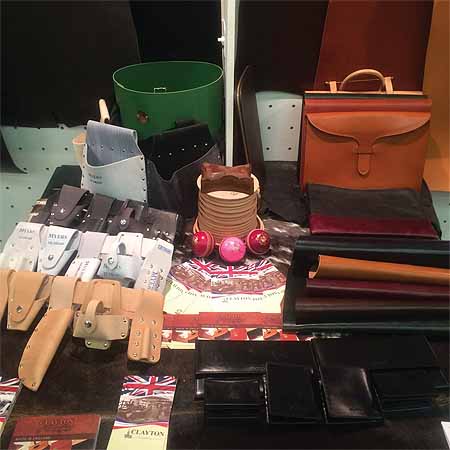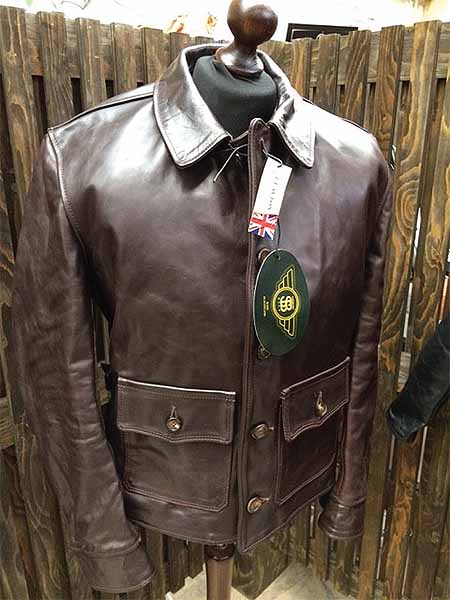Joseph Clayton and Sons Ltd
Hardwearing and flexible
Whilst it has a long and deeply entrenched history, Chesterfield based Joseph Clayton and Sons is very much tuned in to the present day and its ability to adapt to serve the changing needs of a global market is key to its continued success
There aren’t many companies around today that can boast a 175-year history, and today Clayton of Chesterfield is taking bigger strides towards the future than ever before. Now the largest of only four full-scale vegetable tanners left in the UK, the company has undergone a process of continued progression, overcome a number of challenges and diversified across the globe to become a leading manufacturer of high quality leather. “If the company hadn’t been able to adopt new ideas, adapt them going forward and continued to improve them, then we wouldn’t be here as a company today,” highlights Chairman, Ian Walker.

Starting life producing and supplying leathers for the booming industrial revolution of the nineteenth century, Clayton quickly began to prosper. With a major fire forcing the company to move to its existing premises in 1911, it quickly re-established to support the efforts of both world wars and showed a keen ability to adapt to changing technologies, customer bases and opportunities. In the 30s, despite obvious challenges, Clayton became one of the first UK based companies to spot an opportunity for exporting to the US and it subsequently began to capture export business there. Progress continued throughout the twentieth century, as technology adapted, automation began to be implemented in the factory, and exports continued to grow. New markets opened up and Clayton took advantage through a programme of constant innovation and new product launches – particularly into the fashion and small leather goods sector.
“Today we export about 65 per cent of what we make, which includes the figures from recently acquired J E Sedgwick in Walsall,” explains Ian. “We have been concentrating on opening up new markets and in this last year alone we have made significant inroads into the Far East, Japan, South Korea, Taiwan and China. We currently have 168 different types of leather that we can manufacture, but once you take into account the range of finishes and substances this expands to about 6000 different variations.”
By the end of the century and on the dawn of a new one, Clayton continued to play a key role in the global market but faced the economic challenges that plagued the world.
This was exacerbated in 2007 when a major flood threatened to completely wipe the company’s facilities out, but Ian pays testament to its staff’s diligence in recovering operations in a matter of months. However, difficult challenges continued to put pressure on the company throughout the recession and in 2013 Ian was brought on board with the plan to reshape the business and return it to prosperity.
“Over the last two years we have been reinvesting in new equipment, increasing capabilities, implementing new IT and manufacturing systems and either upgrading or replacing machinery, some of which had been in operation for close to 60 years,” Ian outlines. “To that end the company is back to looking very buoyant again.” In its current operations, the company relies on a combination of pit and drum tanning, resulting in reductions in tanning times in comparison with traditional figures. Amongst its recent advancements, the replacement of tired, old machinery has led to far improved levels of quality and precision that has made a marked difference to the process.
Claytons has also made significant developments into material usage. “Last year we proudly achieved 100 per cent recycling of everything we use,” points out Ian. “We use all of the raw hide, knowing exactly which products come from which hides, and all the general waste we produced on site was recycled in some way instead of being sent to landfill.”
This ethical responsibility also extends to the sourcing of its hide and the provenance of the animals used for production, something Ian is keen to publicise. “We know the entire process, from the beginning of the animal’s life, sure that it is responsibly brought up, right through to the end product,” he says. “Provenance is an important issue for us and we want people to understand where our leather comes from and how we process it. When an animal goes into the food chain, its hide is typically worth up to 1.5 per cent of its total value so it is a by-product of the food industry that can be turned into so many beautiful leathers using completely natural processes and techniques that stretch back to the beginning of mankind.”
At the heart of the reshaped Clayton, as it looks ahead, is a renewed focus on product offerings and brands. In 2016 the company will be reviving two of its subsidiaries, Samuel Sharp and William Clarke Currying Company, with histories extending back to 1628 and 1780, respectively. “These are both based around the hand finishing of premium leathers, so we will be launching these names again as two heritage brands to market specific products under those banners,” explains Ian.
Company, with histories extending back to 1628 and 1780, respectively. “These are both based around the hand finishing of premium leathers, so we will be launching these names again as two heritage brands to market specific products under those banners,” explains Ian.
Whilst industrial sectors provided much of Clayton’s success during its history, this has experienced a steady decline and today the company’s main markets are small leather goods and fashion, supplying a number of mid- to premium international brands. Of particular note Ian highlights a customer in South Korea who uses Joseph Clayton English-bred leather to manufacture Apple iWatch straps. “This is an interesting bookend for us,” he says. “Our history goes back to 1840, making leather for necessity and living, and now its being used for luxury goods right alongside the most modern products on the market.” Clayton is also one of four global leather specialists currently producing the high value Cordovan leather, used in luxury products, and following a successful APLF Show in Hong Kong, has gained a lot of interest for the material in the Far East and China. Elsewhere, it also supplies to the world’s largest manufacturer of cricket balls.
As far as the future is concerned, Ian is clear about the company’s strategic direction. “We want to continue growing the group,” he concludes. “At the moment turnover is about £6.5 million and the plan is to hit £8 million by 2017, which is a big leap for the company. We have new products coming through and we will continue to work on new things, primarily in the small leather goods market where the growth is. Equestrian and industrial are no longer growth markets for us, but fashion, small goods and sport are all markets full of opportunities that we hope to make the most of. Ultimately, its about getting the name back into the market and with 175 years under our belt there is an awful lot for us to shout about.”
Joseph Clayton & Sons Ltd
Products/Services: Specialist manufacturer of high quality finished leather
